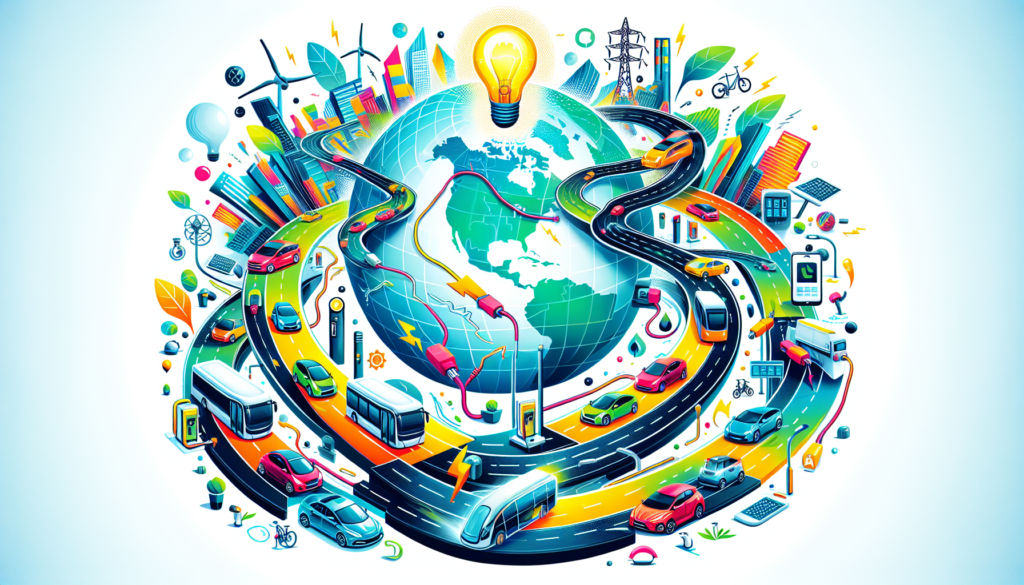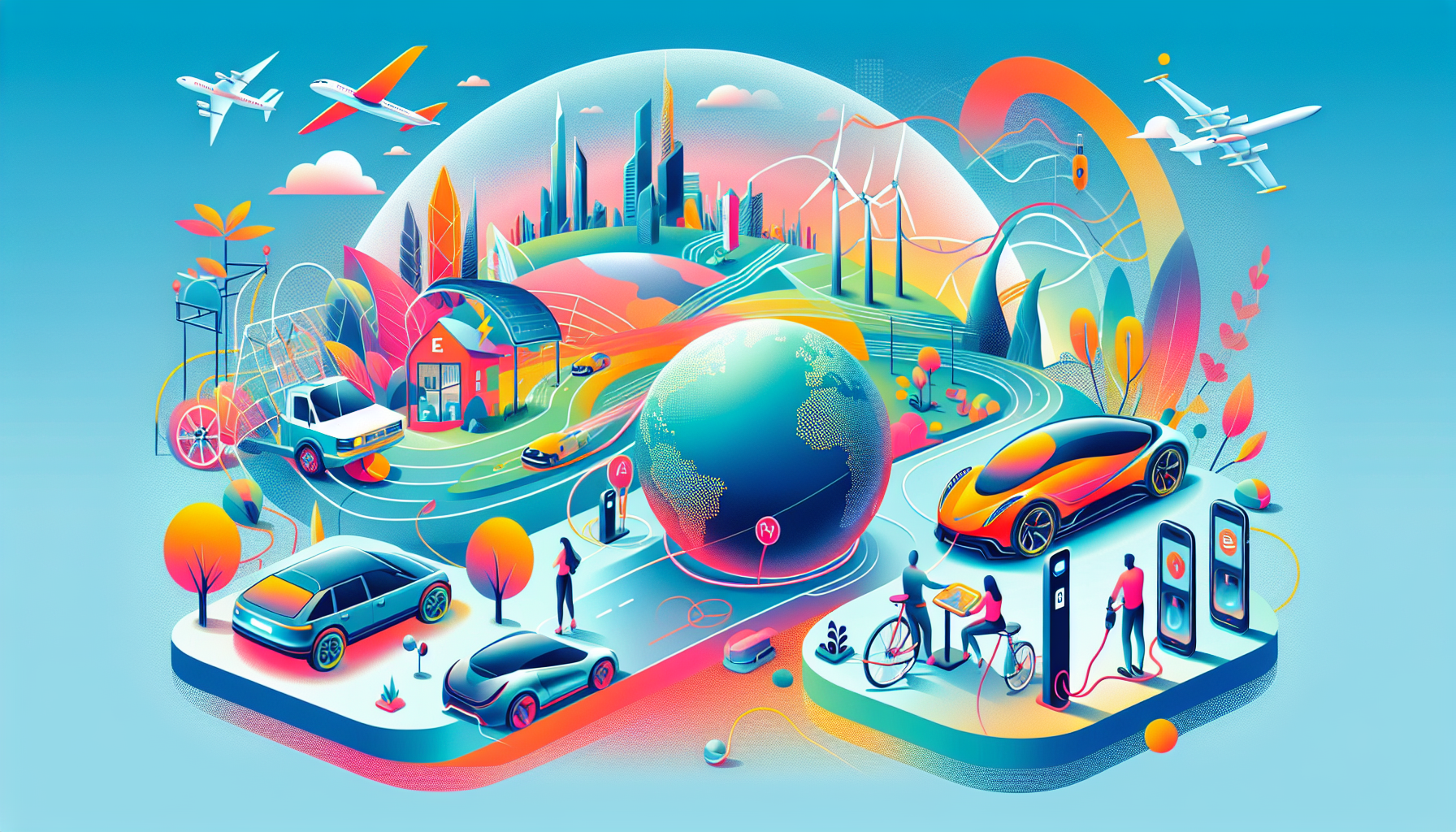
Are electric vehicles taking over the roads? Recent trends suggest they are. The global landscape for electric vehicles (EVs) shows an impressive surge in adoption. Critical factors like diminishing costs, improved infrastructure, and enhanced technology propel EV sales to unprecedented heights worldwide. According to recent statistics, global EV sales have skyrocketed, reflecting a transformative shift in the automotive industry.
So, what’s driving this electric revolution? Policies and incentives play a crucial role. Governments worldwide are rolling out subsidies, tax benefits, and regulations to encourage EV adoption. Meanwhile, consumers are increasingly attracted to EVs’ environmental benefits and long-term savings.
Are some regions faster than others in embracing EVs? Absolutely. North America, Europe, and Asia-Pacific show remarkable progress, each with unique strategies and models. Governments in these regions are not just paying lip service to sustainability but are actively crafting policies to make EV adoption more straightforward and more practical.
What does the future hold for EV adoption? The horizon looks promising, with continual technological advancements and innovations set to redefine the market. Yet, challenges remain. Infrastructure, costs, and consumer acceptance are potential barriers, but with the right solutions, these can be overcome.
Ready to explore the world of electric vehicles and understand the dynamic forces behind their rise? Let’s explore how EVs are transforming our global landscape and reshaping the future of transportation.
Introduction to Global EV Adoption Trends
Have you noticed more electric vehicles (EVs) zipping past you on the highways lately? You’re not alone. The global landscape for EVs is experiencing a transformative shift. The momentum behind the adoption of electric vehicles is not just a blip on the radar; it’s a seismic movement changing how we approach transportation.
Overview of the Current Global Landscape for Electric Vehicles
The adoption of electric vehicles has accelerated beyond the expectations of industry analysts and environmental advocates. This surge manifests in a booming EV market that spans continents. Traditional automakers and new entrants are rushing to cater to the skyrocketing demand. This phenomenon signals a substantial shift in consumer preferences and corporate strategies alike.
Why the sudden spike in EV interest, you ask? It comes down to innovative technology, increasing environmental awareness, and robust regulatory frameworks. Today, nearly every major automotive manufacturer offers an electric model, from budget-friendly options to luxury high-performance cars.
Factors Driving the Surge in EV Adoption
Several key factors contribute to this surge. First, technological advancements have significantly improved EV performance and affordability. We discuss longer battery life, faster charging times, and lower production costs. Remember when the idea of charging your car overnight felt inconvenient? Not anymore. Fast-charging stations drastically cut wait times and seamlessly fit into busy lives.
Government policy and regulation also play a crucial role. Numerous countries have implemented stringent emissions targets, phased out combustion engine vehicles, and offered attractive incentives for EV buyers. These policies promote cleaner air and pave the way for infrastructure development crucial for EV adoption.
Finally, the growing consumer awareness and desire for sustainable alternatives cannot be overlooked. People are increasingly factoring in the environmental impact of their choices, and EVs offer an appealing avenue to reduce one’s carbon footprint. The changing consumer sentiment is evident in the marketing strategies of auto manufacturers, who now highlight eco-friendly features as significant selling points.
Statistical Data Supporting the Increase in EV Sales Worldwide
Statistics tell a compelling story. In 2022 alone, global EV sales reached a milestone by accounting for 10% of total passenger vehicle sales, a 26% increase from the previous year. Want more numbers? China leads the pack, contributing over 50% of global EV sales, while Europe follows with nearly 30%.
The United States has also seen a dramatic rise. In the first half of 2023, EV sales doubled compared to the same period in 2022. Tesla, Ford, and other manufacturers are reporting record-breaking sales quarters. Even traditional gas-guzzler hotspots like SUVs and trucks see electric variants fly off the shelves.
Revenue figures are equally astonishing. The global EV market valuation is projected to surge from $162.34 billion in 2021 to $802.81 billion by 2028. Investors and businesses are betting on a future dominated by electric vehicles.

Regional Analysis of EV Adoption
Have you ever wondered how different regions around the globe are embracing electric vehicles (EVs)? Let’s closely examine North America, Europe, and the Asia-Pacific. Each region has unique drivers, policies, and success stories that shape its EV landscape.
North America
The United States and Canada lead the way in EV adoption in North America. The United States, for example, saw an impressive increase in EV sales in recent years. Government incentives play a crucial role here. Tax credits and rebates make EVs more affordable for consumers—who doesn’t love a good discount?
Moreover, innovative state policies push the agenda further. California’s Zero Emission Vehicle (ZEV) program mandates automakers to produce a certain number of electric cars—a game-changer. Canada follows suit with aggressive emission targets and incentives such as the federal ZEV program.
However, what moves the needle is public awareness. Campaigns highlighting the environmental and economic benefits of EVs increase consumer acceptance. Tesla’s presence and marketing have also contributed significantly.
Europe
Often seen as a trailblazer in sustainable practices, Europe doesn’t disappoint. Norway tops global charts with electric vehicles accounting for over 50% of new car sales. How did Norway achieve this? A combination of policies, incentives, and strategic investments.
The Norwegian government eliminated VAT on EV purchases and slashed registration fees. Additionally, EV owners enjoy free parking and toll exemptions—a dream come true for urban commuters. Other nations, like Germany and the Netherlands, follow similar paths with their unique blend of incentives and stringent emission regulations.
Germany’s government, for instance, offers substantial grants for electric car purchases and invests heavily in charging infrastructure. The European Green Deal aims to make Europe the first climate-neutral continent by 2050, further boosting EV adoption.
Asia-Pacific
Asia-Pacific showcases rapid EV adoption, particularly in China and Japan. China stands out as the largest EV market globally. Government policies, financial incentives, and a strong manufacturing sector drive this colossal growth. The Chinese government’s policy mandates automobile manufacturers to meet minimum EV production quotas.
Financial incentives are abundant. Subsidies for EV buyers reduce the upfront cost and make EVs more accessible. On the ground, charging infrastructure receives massive investments—did you know China aims for over 4.8 million charging points by 2030?
Japan, known for automotive innovation, is also seeing a surge in EV adoption. The Japanese government offers a combination of subsidies and tax reductions for EV buyers. Additionally, the public and private sectors work together to advance battery technology and charging infrastructure.
Case Studies of Leading Nations
Let’s dive into some case studies showcasing nations excelling in EV adoption:
Norway
Norway remains unmatched in its EV journey. Government incentives cover various aspects, from taxes to tolls, making it highly cost-effective to own an EV. Beyond economic measures, Norway’s commitment to renewable energy means most EVs run on green electricity. As a result, Norway sets a powerful example for the world.
China
China’s rise as an EV superpower is nothing short of remarkable. Aggressive government policies demand high production and reduced emissions. Coupled with financial incentives, this creates an environment where EVs thrive. China’s ambitious goal is to have electric cars account for 50% of total auto sales by 2025—a lofty yet achievable target considering their trajectory.
Germany
Germany, home to renowned automakers, leverages its expertise to become a leader in the EV space. State support in the form of grants and green initiatives helps. Furthermore, German automakers invest heavily in R&D for EV technologies. The nation’s commitment to building a robust charging infrastructure adds to its competitive edge.
By analyzing these regional strategies and case studies, it’s clear that tailored approaches drive success. Whether through stringent policies, lucrative incentives, or massive infrastructure projects, each leading nation offers valuable lessons on effectively promoting EV adoption.

Future Outlook and Challenges
What does the future hold for global EV adoption? Experts predict a robust growth trajectory in the coming years. The International Energy Agency (IEA) projects that the total number of electric vehicles worldwide will reach 125 million by 2030.
Technological Advancements and Innovations
Technology advances rapidly, bringing innovations that will reshape the EV market. Battery technology leads the pack. Improved battery capacities and faster charging times make EVs more practical. Lithium-ion batteries, currently the most common, are becoming smaller, lighter, and cheaper. Solid-state batteries, which promise even higher energy densities and safety, are on the horizon.
Autonomous driving technology is another game-changing factor. Self-driving EVs offer conveniences and optimize energy efficiency. Tesla, Waymo, and other companies are investing heavily in this technology.
Wireless charging is an exciting development. This allows EVs to charge without physical cables, offering unprecedented convenience. Imagine parking your car and having it charge automatically.
Potential Challenges and Barriers
No progress comes without its hurdles. Despite the optimistic outlook, several challenges could hinder EV adoption.
Infrastructure Limitations
A robust charging infrastructure is essential for EV adoption. Many regions lack enough charging stations, making long-distance travel challenging. Governments and private sectors need to invest more in infrastructure. Installing fast chargers along highways and in urban areas could alleviate this concern.
Cost Factors
Cost remains a critical barrier. Though EV prices are declining, they cost more upfront than internal combustion engine vehicles. Incentives like tax rebates and subsidies help, but more needs to be done. Manufacturers must find ways to reduce production costs, improving economies of scale.
Consumer Acceptance
Consumer attitudes towards EVs can be mixed. Many are concerned about range anxiety—the fear of running out of battery power. Educating the public and demonstrating the benefits of EVs can change perceptions. Car manufacturers and governments should directly invest in marketing campaigns addressing these concerns.
Moreover, some consumers are hesitant due to limited model availability. Expanding the variety of EV models, from compact cars to SUVs and trucks, will cater to different needs and preferences, thus encouraging broader acceptance.
Possible Solutions
Addressing these challenges requires a multi-faceted approach. Collaboration between government bodies, private companies, and research institutions is crucial.
Policy Interventions
Governments should implement stronger policies to support EV adoption. Increasing subsidies, providing tax incentives, and enforcing stringent emission regulations can drive the market forward.
Innovation in Battery Technology
Continual investment in R&D should focus on breakthrough battery technologies. Solid-state batteries and other innovations can lower costs and increase vehicle range, addressing key consumer concerns.
Public-Private Partnerships
Building more charging stations requires collaboration. Public-private partnerships can pool resources for infrastructure development. Example: Tesla’s Supercharger network, in partnership with various entities, offers widespread fast-charging options.
Are we ready to embrace an electrified future? With ongoing technological advancements and strategic efforts to overcome challenges, the road ahead for EV adoption globally looks bright.
In conclusion, the surge in global EV adoption represents a significant milestone in pursuing a sustainable future. The combination of favorable government policies, technological innovations, and growing environmental awareness has accelerated the transition toward electric mobility. Worldwide, regions embrace EVs at different paces, each driven by unique strategies and incentives. From North America’s ambitious EV targets to Europe’s stringent emissions regulations and Asia-Pacific’s rapid technological advancements, it’s clear that a concerted global effort is underway.
The path forward, while promising, is not without hurdles. Challenges such as infrastructure development, high initial costs, and consumer acceptance remain. Nonetheless, with continued innovation and strategic investments, these obstacles are surmountable. The global community stands at the cusp of a transportation revolution. The collective actions of governments, businesses, and consumers will ultimately shape the future landscape of EV adoption, ensuring cleaner, more efficient transportation for future generations.
Isn’t it exciting to imagine a world where electric vehicles are the norm rather than the exception? As we drive towards this future, every new EV on the road is a step closer to a healthier planet. Let’s embrace this electric revolution and work together to overcome the challenges, ensuring that the promise of a greener tomorrow becomes a reality today.
